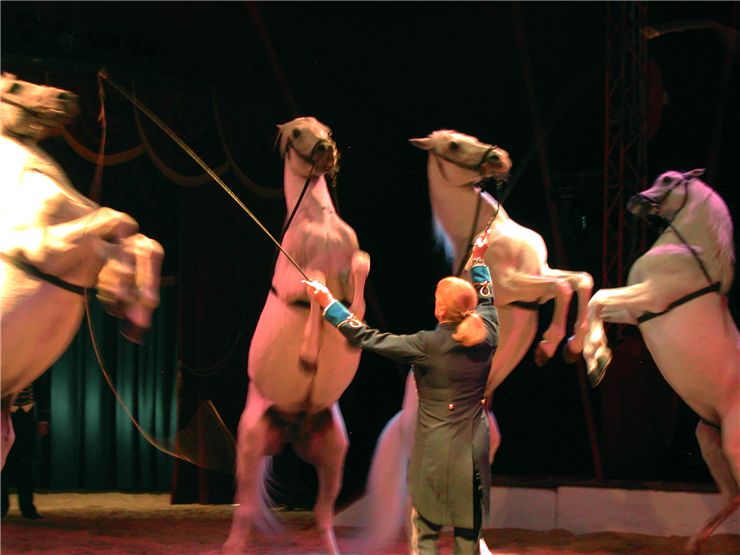Interesting Facts about Circus
- In the last 250 years, how long they have existed, there happened some exciting things that could be said about modern circuses – some positive and some negative:
- Many ancient civilizations like Egyptian, Chinese, Indian, Greek, Roman, Norse, Aztec, and Polynesian knew about juggling.
- There are eight variants of tightrope walking: tightwire, highwire, slackwire, skywalk, slacklining, freestyle slacklining, funambule, and jultagi (Korean tradition).
- The first modern circus was opened in 1768 by Philip Astley, but some say that circuses as a way of public entertainment originate from ancient Rome and their “circuses”.
- The first modern circus appeared in the United States in Philadelphia in 1793, and its owner was Englishman John, Bill Ricketts.
- USSR opened its State University of Circus and Variety Arts (or the Moscow Circus School) in 1927.
- J. Purdy Brown was the first to place a circus inside a giant “big top” tent. He did it in 1825.
- “Circo Atayde” is the oldest still-running circus in the world. It was founded on August 26, 1888, in the Plaza de Toros, Mazatlán, Mexico, and is still run by the same family - Atayde.
- Contemporary circus, as we know it today, appeared for the first time in the 1970s. It's a combination of classic circus and theater.
- Some estimations are that there are around 20,000 clowns in the world.
- Circus performers consider whistling and eating peanuts backstage bad luck. They carry hair from an elephant's tail in their pocket for good luck.
- Circuses are often accused of mistreatment of animals.
- the United States has around 12,000 circuses with animals. Less than 100 U.S. Department of Agriculture inspectors are assigned to monitor them.
- Animals in circuses spend around 96% of their time chained or caged.
- Caged animals often show repetitive behavior like obsessive swaying, bobbing, and rocking. These happen because these animals' high stress and boredom affect them. Elephants, for instance, spend 10 hours a day, on averagely, in this kind of behavior
- Most animals in circuses spend around 11 months a year on the road, in box cars and cramped. Because they don't move enough, they develop arthritis and other joint problems.
- Animal trainers in circuses use bullhooks, whips, and electric prods to train animals to do tricks.
- There are laws protecting animals in traveling shows, but they are inadequate and poorly enforced.
- Circuses mostly use animals captured in the wild and taken from their habitat.
- Many circuses lease their animals seasonally from dealers. Because of that, some circuses don't provide regular, competent veterinary care. It is cheaper that way.
- Animals are, during transport, often deprived of food and water for extended periods.
- Cages in which tigers are kept are an average of 5 m2 in area.
- A law that will ban the use of all wild animals in circuses will be enforced by the end of 2015 but only in England.
